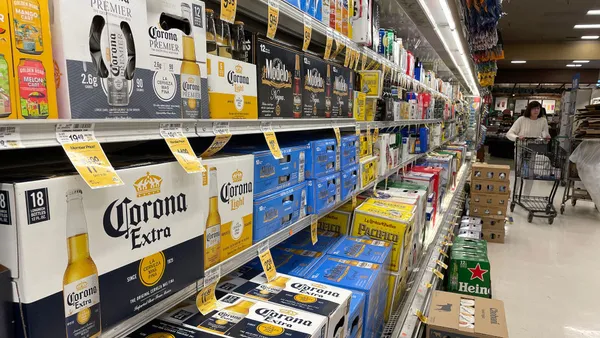Dive Brief:
-
Snacking is now an all-day practice in the U.S., with salty snacks becoming particularly popular between meals and as a meal replacement, a new Innova Market Insights report found.
-
The global market research company said 46% of consumers have salty snacks between meals in the afternoon and 37% of them do so in the evening. More people are also replacing meals with salty snacks, Innova said, with 23% consuming them at lunch, 17% at dinner and 8% at breakfast.
-
The industry has responded by launching more nutrition-packed salty snacks, including snack nuts and seeds, the report noted. Such product introductions had an 11% compound annual growth rate between 2014 and 2018, Innova said. Launches of snack mixes containing fruits, nuts, seeds and sometimes chocolate grew by 16% during that period.
Dive Insight:
When consumers were asked about their motivation for buying salty snacks, 40% said they got them for taste and 22% said they purchased them as treats or rewards, Lu Ann Williams, Innova's head of innovation, said in a release. Consequently, manufacturers are developing innovative products offering both flavor and nutritional benefits so they can remain competitive in a thriving segment.
Healthier snacking is especially prevalent among younger consumers, according to NutritionInsight. Innova research has found 63% of millennials are busy and tend to use snacks to replace meals — and they're also interested in different options featuring more intense flavors and intriguing textures. Half of Generation Xers want to limit sugar, and two-thirds of baby boomers are trying to shift their dietary practices to become healthier, NutritionInsight said.
These report findings may be able to help manufacturers reformulate existing products or introduce new ones to appeal to this increasing group of 24/7 snackers. Certain items are becoming more like small meals, with meat snacks including vegetables and more natural granola bars hitting retail shelves. Food makers have also beefed up products with additional protein and other nutrients so they score on both convenience and satiety.
Convenience remains the top motivation behind snacking choices, according to a recent "State of Snacking" report from Mondelez and The Harris Poll. Globally, 59% of adults and 70% of millennials prefer snacking to regular meals, that report found. The main assets consumers want in snacks are freshness, low sugar and low fat, the report said. Food makers who find a way to combine those qualities with convenience are more likely to find success with their snacks than those who don't.
But for those who produce more meal-like products — frozen entrées or bowls, for example — the Innova report results could sound an alarm. These manufacturers may be able to tap into the snacking space by making their products look and sound more snack-like, or perhaps more of them will decide to make freeze-dried meals that can be ready in 10 minutes by adding boiling water.
Although not everyone is likely to forgo a regular sit-down meal in favor of snacking — at least not every day — the product options are likely to become more available and more nutritious for those who increasingly do.













